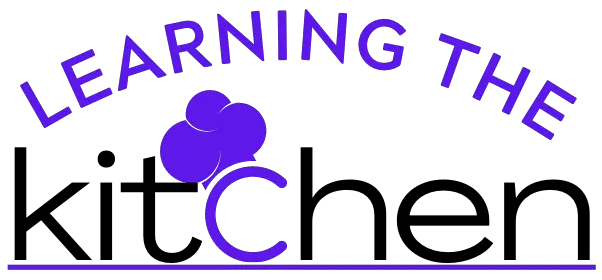When you start looking for the best kitchen knife set, it’s a good idea to keep informed on what are the different parts of a knife. For something so simple there are several parts to every knife you should know. Let’s dive into the different parts of a knife so you know what is what.
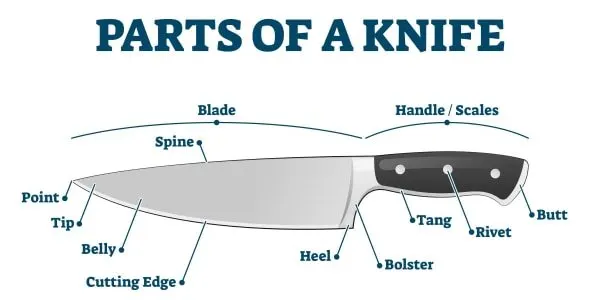
Types of Knives
There are two main types of knives: fixed blade knives and folding knives. Each has its own advantages and disadvantages, so it’s important to choose the right type of knife for your needs.
Fixed Blade Knives
Fixed blade knives are designed for durability and strength. They typically have a full-tang construction, meaning that the blade is made from a single piece of steel that extends all the way to the end of the handle. This makes a fixed blade knife much more sturdy than a folding knife, which have a hinge that can be weakened over time.
Fixed blade knives are also usually easier to sharpen since there’s no need to worry about damaging the hinge. However, they are typically larger and heavier than folding knives, making them less convenient to carry around. The fixed blade knife is most commonly seen in kitchen knives.
Related: Half Tang vs. Full Tang Knives
Folding Knives
Folding knives, on the other hand, are designed for portability and ease of use. They can be easily slipped into a pocket or purse, and they’re generally lighter and smaller than fixed blade knives. Folding knives also have the advantage of being able to be locked into place, which can provide extra safety when using them. However, they’re not as strong as fixed blade knives, and they can be more difficult to sharpen properly. These are commonly seen as pocket knives and are not a common type of knife among kitchen knives.
Which is best?
So, which type of knife is right for you? It depends on your needs. If you’re looking for a strong and durable knife that can stand up to heavy use, a fixed blade knife is a good choice. If you need a knife that’s easy to carry around with you and won’t take up too much space, a folding knife might be a better option. Whichever type you choose, make sure to read the reviews before you buy to find the best model for your needs.
Parts of a Knife Handle
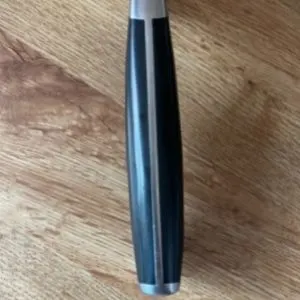
There are 11 parts of a kitchen knife, split up into two main areas, the blade and the handle. The handle is where you grip the knife and can come in many shapes and looks. There are many common handle materials. There are wood handles, pakkawood handles, plastic and metal knife handles.
Wood handles are perhaps the most traditional, but pakkawood, plastic, and metal are also common handle materials. Each type of handle has its benefits and drawbacks.
Wood handles are often the most comfortable to grip and provide good shock absorption, but they require more care than other types of knife handles.
Pakkawood is a composite material that looks like wood but is more durable. Plastic handles are lightweight and easy to clean, but they may not be as comfortable as other materials. Metal handles are very durable, but they can be slippery to hold. Ultimately, the best handle material for you is a matter of personal preference and how much effort you want to
Butt

The butt of the knife is the end of the handle of a knife. The butt of a knife can have a cap on the end of it, or it can be a rounded edge.
Tang
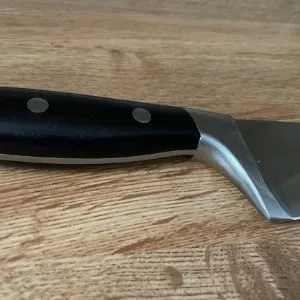
The tang of a knife is where the metal from the blade goes into the handle covering. There are full tangs and partial tangs, and false tangs.
In the image above you can see that this is a full tang knife. Meaning that the metal runs all the way through the knife handle. Full tang knives are better because they have more strength and are considered better knife construction. Quality kitchen knives will usually have a full tang unless it’s a partial tang for usage purposes.
A partial tang is when the tang only goes part of the way into the blade of the knife and is used more with delicate knives that require more accuracy when cutting, like a filleting knife. The last type of tang is a false tang and this is usually a hidden tang that is used in low-priced knives and doesn’t offer much support to the blade or the durability of the knife itself. We’ve had these in the past, and the blade will often pop out of the handle.
Bolster
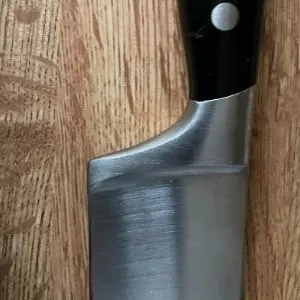
The bolster of a knife is the thick part of the blade of the knife that provides an easy transition from the blade to the handle. Not all knives will have this. They are usually dull and serve as a stopping point for your handle grip. They are common on knives with a full tang.
Rivets
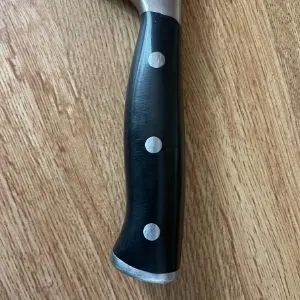
The rivets on a knife handle are used to secure the handle to the blade to prevent them from separating. If a knife handle is molded, as is with several knife makers, there is no need for rivets. Rivets on knife handles are commonly associated with a higher-quality knife.
Parts of a Blade of a Knife
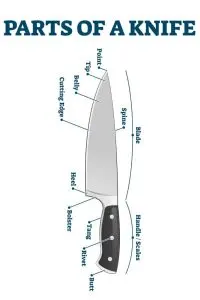
The blade of the knife is more important than the knife’s handle, typically when you are looking at knives. The blade is a piece of steel that serves for cutting. It can be stamped or forged depending on the quality and the knife maker. The metal that is used is very important as well as its Rockwell Hardness Scale (RHS). The harder the knife, the longer the knife can keep its edge.
Heel
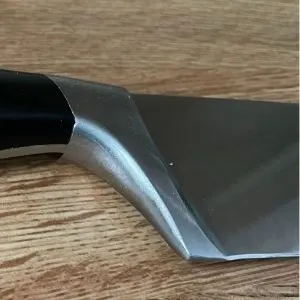
The heel of the knife is the widest part of the knife blade. It is typically connected to the bolster and is at the end of the blade closest to the handle. This part of the knife is wider and can be used to cut denser items like sweet potatoes and carrots.
Spine
The spine is the top of the knife blade. Unless you have a double-edged blade, the spine of the blade will be dull and thicker than the cutting edge. This is not a sharp part of the blade.
Cutting Edge
The cutting edge of the knife is often referred to as the blade of the knife. But in truth, the whole half of the knife is the blade. There are several parts of the cutting edge, including sharpness, degree of edge, and whether it’s a serrated knife or not.
This is the sharpest part of a knife and comes in a variety of different metals depending on the manufacturer and the location of the metal. The cutting edges in the center is the most used part of the knife for cutting.
Belly
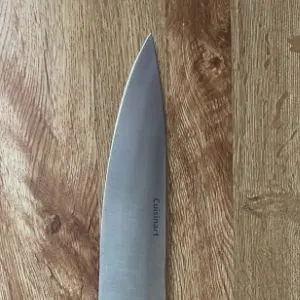
The belly of a knife is the rounding or curving part of the blade where the cutting edge rounds to the tip of the knife. This can be used to rock the knife for a style of cutting. Some knives will not have a belly like the Japanese nakiri knives, meat cleavers, or butcher knives.
Tip
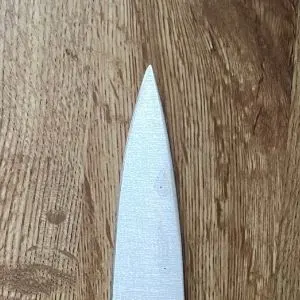
The tip of a knife is used for more precise cutting with the knife, and because it is further away from the handle, you are not able to exert as much pressure as you would if you were using the cutting edge or near the heel of the blade. A knife’s tip encompasses the whole end of the knife (point included) and, along with the cutting edge is the sharpest part of the blade.
This is contrary to what many think; the tip of the knife is not the very pointed tip, which is called the point of the knife (see next).
Point
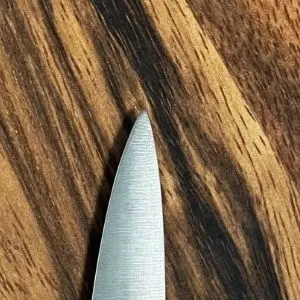
The point of the knife is the pointed part at the end of the knife where the spine and the cutting edge meet. All types of knives will have a point where the piece of metal comes to a point.

Types of Kitchen Knives
There are many different types of kitchen knives, and some will have all of the above features while others will only have a few. For example, a chef’s knife will have a heel in most cases, whereas a paring knife may not, given the size and shape of the knife itself.
Here is a list of kitchen knives
- Chef Knife
- Paring Knife
- Bread knife
- Steak Knife
- Utility Knife
- Santoku Knife
- Carving knife
- Tomato knife
- Cleaver Knife or Butcher Knife
- Boning Knife
- Fillet knife
- Salmon knife
- Oyster Knife
- Nakiri Knife
How to dispose of old knives?
If you are ready for a new knife set and need to dispose of your old knives, there are several ways to do so. You can donate them, or safely throw them out if they are no longer usable.
